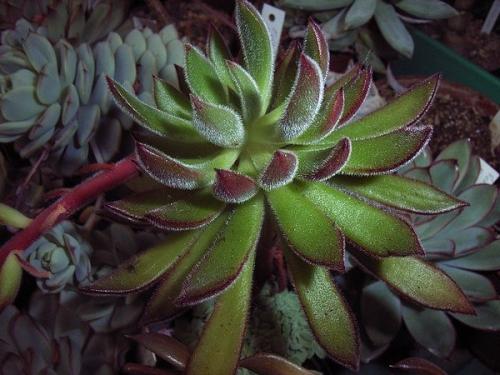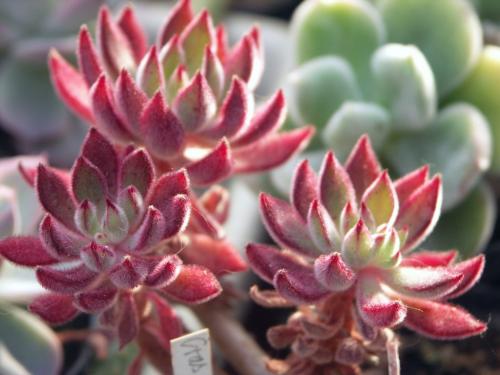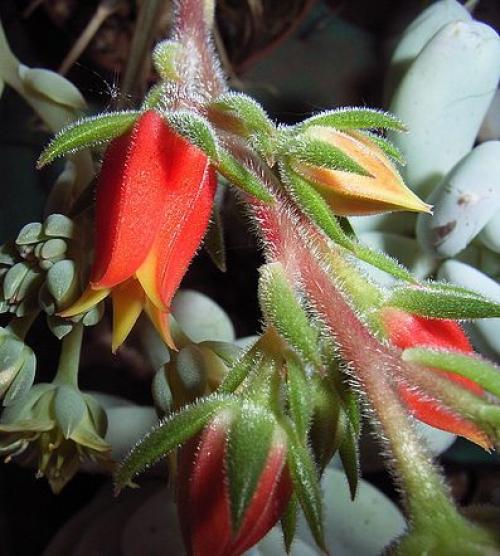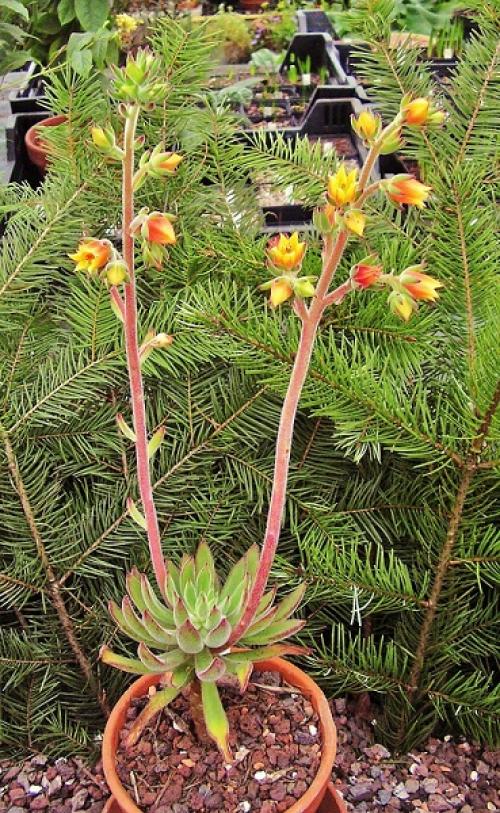Anit 아니트
Origin unknown / Origine inconnue
Parentage / Parenté : E. setosa x E. harmsii / E. 세토사 x E. 함시
Named by / Nommé par Werner Krell
First published in Sedum Society Newsletter No 92, January 2010, p.28-29.
Description of a 2 years old plant.
Stems upright, up to 11 cm long, 1cm in diameter, covered with brown felt-like hairs, leaf scars whitish.
Rosette more or less compact, 30 – 40 leaves, 5 cm high and about 10 cm in diameter.
Leaves up to 5 cm long, 1,2 cm wide in upper third, 0,4 cm thick, upper side flat, underside slightly convex and keeled, oblanceolate, acuminate; young leaves green, densely covered with white hairs, tips red. Older leaves with vinaceous margins and keels, also upper part of underside vinaceous.
Inflorescences 1 -4, total length 20 cm and more, 3,5 mm thick, upright to slightly pendant, vinaceous, hairy; bracts numerous, 17 or more, up to 2,6 cm long, 5-6 mm wide and 3,5 mm thick, colour same as older leaves, margins and upper part of underside vinaceous, hairy, persistent.
Flowers up to 11, pedicels 12-20 mm long, with 2 or 3 bracteoles up to 1 cm long, persistent. Sepals more or less equal, almost not united at base, up to 10 mm long and 3 mm wide, slightly spreading; green with vinaceous tip, hairy. Corolla 20 mm long, 9 mm diameter near base; petals strongly keeled, bright red outside, yellow inside – identical to flowers of E. harmsii, only shorter – slightly spreading at apex.
The whole plant is hairy – leaves, inflorescences, bracts – even flowers have very fine hairs.
Discussion
Without flowers this plant can easily be mistaken for Echeveria ‘Set-Oliver’, the hybrid Victor Reiter created in 1932 and E. Walther described in CSSA : 1937, No. 10, 172-173. Both plants are hairy in all external parts and differ only in the colouring of older leaves and bracts – E. ‘Set-Oliver’ is maroon while E. ‘Anit’ is vinaceous.
But when in flower the two hybrids are quite distinct : While the petals of E. ‘Set-Oliver’ are red and yellow outside, thus showing the influence of E. setosa, those of E. ‘Anit’ are entirely red and clearly remind of E. harmsii.
This suggests that the parents of both hybrids are the same Echeveria species – whether E. ‘Anit’ is a different clone of the crossing E. setosa x E. harmsii or the inverse cross is not known.
Werner Krell & Margrit Bischofberger



